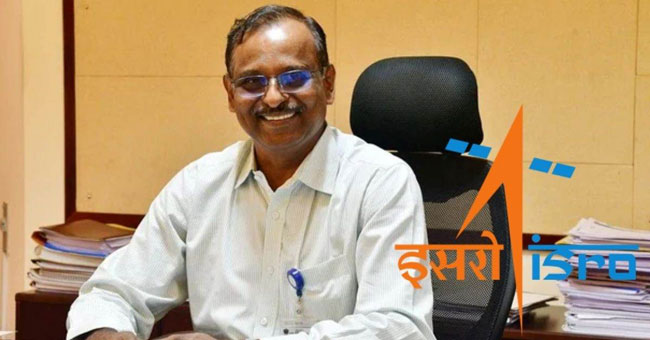The Indian Space Research Organisation (ISRO) is set to welcome its new leader. On January 14, Dr. V. Narayanan will take over as the chairman after the tenure of the current chief, S. Somanath, concludes. Dr. Narayanan’s journey, from studying in a roofless school to becoming the head of the prestigious space agency, is nothing short of inspiring. His career with ISRO began in 1984, marking a remarkable journey in the field of science and space exploration.
The Journey of Dr. V. Narayanan
Dr. V. Narayanan was born in the small village of Melakattuvilai in Tamil Nadu’s Kanyakumari district to a humble farming family. He is the eldest son of the late farmer C. Venniperumal and S. Thangamal Narayanan. His early education took place in a government school, followed by a Tamil-medium high school. Remarkably, his home got electricity only when he reached the ninth grade, and he studied by the light of kerosene lamps before that. The school he attended lacked even a proper roof.
An ISRO scientist shared with the Times of India that Dr. Narayanan was deeply inspired when one of his teachers announced the successful landing of humans on the moon, a memory he still recounts with enthusiasm. Despite significant challenges, he excelled academically, securing the first rank in his 10th-grade exams. He went on to study mechanical engineering through the AMIE program and later completed his M.Tech and Ph.D. at IIT Kharagpur.
A Stellar Career at ISRO
With over four decades of experience, Dr. Narayanan has held several pivotal roles at ISRO. He is renowned for his expertise in rocket and spacecraft propulsion. His significant achievements include leading the C25 cryogenic project for the GSLV Mk III vehicle as its project director. Under his leadership, ISRO’s Liquid Propulsion Systems Centre (LPSC) has delivered 190 liquid propulsion systems and control power plants for numerous missions.
Dr. Narayanan has also contributed to key missions like Aditya-L1, GSLV Mk III, Chandrayaan-2, and Chandrayaan-3, particularly in the development of their propulsion systems.
What Lies Ahead
Speaking recently, Dr. Narayanan acknowledged ISRO’s current phase of success and highlighted upcoming missions like Chandrayaan-4 and Gaganyaan. “This is a great institution that has been led by many outstanding individuals in the past. I feel privileged to be part of it,” he remarked.
He also shared updates on ISRO’s future projects, including the Space Docking Experiment (SPADEX) initiated on December 30, 2024. The docking test for SPADEX satellites is scheduled for January 9.
Dr. Narayanan emphasized the progress being made on the Gaganyaan mission, which includes the launch of unmanned modules and rockets. Additionally, by the end of January, ISRO plans to launch the NVS-02 navigation satellite via a GSLV rocket from Sriharikota.
Furthermore, the assembly of rockets for the Gaganyaan G1 module and the launch of a commercial satellite from the U.S. using ISRO’s Mark III vehicle are also underway at the Sriharikota spaceport.
Dr. Narayanan’s leadership promises an exciting and ambitious future for ISRO, with groundbreaking missions on the horizon.




